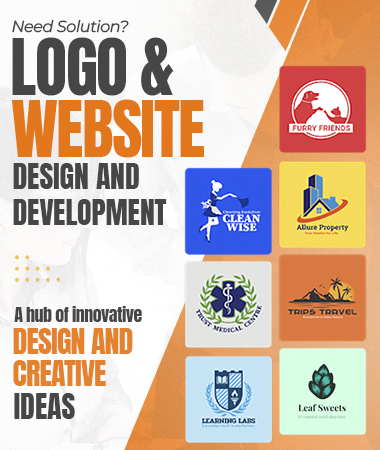How to Include a Multi-Purpose WordPress Website Design Theme?
Because of its versatility and user-friendly custom website design, WordPress is a popular platform for creating websites. There are so many themes available on the market that choosing one can be difficult for an affordable website design service help. Multi-purpose themes are highly sought-after due to their wide customization options and adaptability. You will be able to easily incorporate a multipurpose WordPress theme into your unique website design.
In order to select a theme via cheap website design deal that best suits the unique requirements of your website, you must first conduct extensive research. Select themes with lots of templates, a wide range of customization options in best website design, and good user reviews. Leading multipurpose themes include Avada, Astra, and Divi.
When making a decision, take into account these factors:
- - Design Flexibility: Look for components that may be altered, such as fonts, color schemes, and layouts.
- - Mobile Responsiveness: Make sure the theme works properly on computers and mobile devices alike.
- - Performance: Choose themes with coding that is optimized and well-known for their quickness.
After you've decided, purchase the theme directly from the creator or from a reliable source. After making a purchase, download the theme files and documentation. These are usually supplied in a.zip file format.
You can buy website design service for installing a WordPress theme is user-friendly. Here’s a quick rundown:
- 1. Access Your WordPress Dashboard: Log in to your WordPress admin area.
- 2. Navigate to Appearance > Themes: Go to the Themes section under Appearance.
- 3. Upload the Theme: Click “Add New” and select “Upload Theme.” Choose the .zip file and click “Install Now.”
- 4. Activate: After successful installation, click “Activate” to set it as your active theme.
Now that your theme is active, customize it to resonate with your brand. Most multi-purpose themes offer intuitive customization options via built-in theme customizers.
Consider these customization avenues via website design service online:
- - Header and Footer: Incorporate your logo, navigation, and other key elements.
- - Page Designs: Explore different layouts or design your own using drag-and-drop tools.
- - Typography: Align fonts and sizes with your brand identity.
- - Color Palette: Choose colors that reflect your brand’s essence.
- - Widgets and Sidebars: Utilize widgets to showcase content like recent posts or social media feeds.
To amplify functionality, consider plugins recommended by your theme. These could range from SEO tools to performance boosters.
Before installing, ensure compatibility with your theme. Some popular choices are:
- - Yoast SEO: Enhances website visibility on search engines.
- - WooCommerce: Essential for e-commerce functionalities.
- - Contact Form 7: Ideal for customizing contact forms
- - Cache Plugins: Boost performance with plugins like WP Super Cache or W3 Total Cache.
After customization and plugin installation, thoroughly test your website for functionality and appearance. Key areas to review include:
- - Device Compatibility: Ensure seamless display across devices.
- - Navigation: Validate all links and menus.
- - Loading Times: Use tools like Google PageSpeed Insights to optimize speed.
- - Functionalities: Confirm interactive elements work as intended.
Maintaining your website's health involves regular updates to the theme, plugins, and WordPress core. Updates often include bug fixes, new features, or security patches.
Remember to backup your site before updating to avoid potential issues.
Please don't hesitate to contact the theme's support channels if you run into trouble or have questions while customizing the theme. To help users, the majority of theme creators provide thorough documentation, tutorials, and community forums.
You may successfully incorporate a multipurpose WordPress theme by following this approach, creating a website that is not only aesthetically pleasing but also practical and in line with your brand's mission. Make sure the user experience is excellent by taking your time, testing thoroughly, and keeping everything up to date.
Related Blogs
- Web Design Accessibility: Ensuring Inclusivity for All Users
- How to Create a WordPress Website?
- How to Use Google Analytics for Digital Marketing?
- How to Deal with Platform Compatibility Challenges in the Website Design Process
- Process of Metaverse Website Development?
- Tips to Integrate Data Science in Website Development
- Importance of URL in a Website Design
- How to Include Cultural Sensitivity in Website Design
- Tips for Keeping Backups in Website Development
- Remarketing Advertising Trends in 2024
- Four Pillars of Website Development and Tricks to Apply It
- Importance of Scriptwriting in Social Media Digital Marketing
- How to Create Graphic Design for a Packaging Material of a Brand
- How to Conduct SERP Analytics and Tracking in Digital Marketing
- How to Differentiate a Logo Designed for Video Game?
- Tips to Develop Angular JS Website Development
- Integration of Scroll-triggered Animations in Website Design
- Describe What Is Microsoft SharePoint and Its Importance for Website Development
- Tips to Download Resources (Webpage, Files, Videos) From A Website
- Suggest Importance of Bootstrap Process in Website Development
- How to Implement Web Design in Semplice Site Builder?
- Guide How to Design Content for Digital Marketing Newsletter
- How to Develop Website Based On PSSE UEL Model?
- File Format and Usage Guidelines Assistance for Logo Design
- Tips to Future Proof Website Development Process using New Technologies
- How to Use Mailchimp for Custom Digital Marketing Campaigns
- Understanding Custom Experimental Navigation in Website Design
- Importance of Domain Name in Website Development
- Introduction to Deeply Nested Schemas in Digital Marketing



